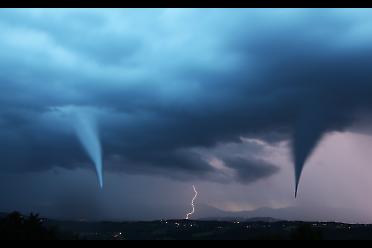Early estimates suggest the tragic tornado outbreak in Oklahoma this week resulted in $2 to $5 billion in insured property losses, according to weather risk-monitoring firm EQECAT.
But calculating accurate property damage estimates in the wake of a tornado remains a challenge for analysts, insurers and the mortgage industry.
CoreLogic Spatial Solutions is currently working on a new modeling system that aims to expedite and more accurately assess tornado property damage in the days following a storm.
But tornadoes remain a challenge for scientists on the property damage front.
When compared to hurricanes and earthquakes, tornadoes are less predictable — and the damage is not equitable, making it hard to simply declare losses in an entire neighborhood without sending out ground troops to separate total losses from homes that were only partially damaged.
There is no rhyme or reason to how a tornado hits; it hits one house and leaves another, creating an inconsistent trail of destruction that is difficult to study by simply analyzing property values within a given parameter, says Tom Jeffery, senior hazard scientist at CoreLogic Spatial Solutions.
EQECAT made its initial estimate after the National Weather Service confirmed 16 tornado touchdowns on May 18, another 29 on May 19 and 31 tornadoes on May 20.
“Advance tornado forecasts and warnings were not sufficient to reduce the loss of life from these events,” EQECAT said in its report.
Jeffery says his group “was originally created to provide mortgage and insurance industries with an idea of where the risk is and where the potential for the highest amount of damage is going to be.”
The company has a large database of parcel boundaries and can use that information to easily estimate the number of properties damaged within an impacted area by combining that data with property valuation research.
But the inconsistent nature of tornadoes makes it much more difficult to get the best property damage estimate early on, Jeffery told HousingWire. Residential roofing and commercial roofing damages are some of the most common effects of a tornado. A big chunk of insurance claims is used to pay for roofing repairs and replacement projects.
In a tornado, there will always be total losses sitting next to homes that are not damaged or only 10% damaged, he said.
“This is where the feet on the ground is valuable,” Jeffery explained.
While hurricanes and floods generally have definitive boundaries where every property is mostly impacted in some way, tornadoes create an inconsistent path for researchers.
“When those events occur, we can usually put out an estimate fairly quickly,” Jeffery said. “They leave a definitive boundary. Unfortunately, tornado activity does not provide us with a nice clear boundary. There are going to be homes that are less damaged next door to those that were completely destroyed, so we are trying to work our way through an algorithm that will allow us to do that.”
Jeffery said the goal is to be as accurate as the firm can be in the wake of a tornado incident.
The author of this article is: Kerri Ann Panchuk
At GayRealEstate.com, we keep you updated with all the gay realtor, lesbian realtor, gay realty, gay real estate and general real estate news affecting the LGBT community coast to coast, and in your neighborhood.
Click here for list of gay realtors, lesbian realtors and gay friendly realtors Nationwide.
If you have a real estate story that you’d like to share with us with the gay and lesbian real estate community, please contact us at: manager@gayrealestate.com


